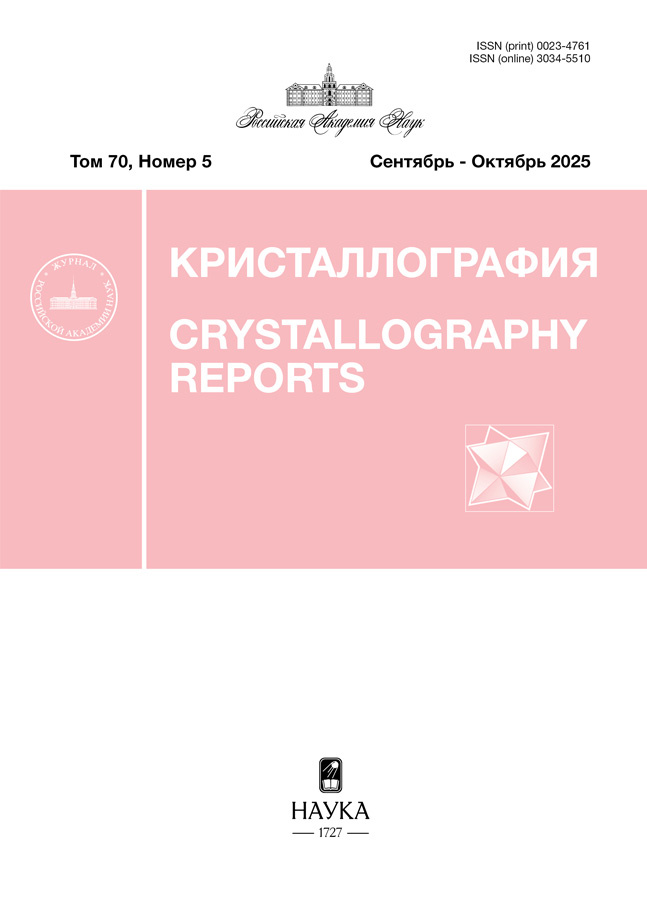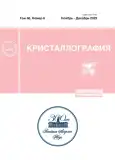Получение и кристаллографический анализ комплекса рецепторсвязывающего домена SARS-CoV-2 и вируснейтрализующего наноантитела
- Авторы: Бойко К.М.1, Варфоломеева Л.А.1, Егоркин Н.А.1, Миняев М.Е.2, Алексеева И.А.3, Фаворская И.А.3, Рябова Е.И.3, Прокофьев В.В.3, Есмагамбетов И.Б.3, Щебляков Д.В.3, Логунов Д.Ю.3, Гинцбург А.Л.4, Попов В.О.1, Случанко Н.Н.1,3
-
Учреждения:
- Институт биохимии им. А.Н. Баха, Федеральный исследовательский центр “Фундаментальные основы биотехнологии” РАН
- Институт органической химии им. Н.Д. Зелинского РАН
- НИЦЭМ эпидемиологии и микробиологии им. Н.Ф. Гамалеи
- ФГБУ Национальный исследовательский центр эпидемиологии и микробиологии имени почётного академика Н.Ф. Гамалеи Минздрава России
- Выпуск: Том 68, № 6 (2023)
- Страницы: 866-873
- Раздел: СТРУКТУРА МАКРОМОЛЕКУЛЯРНЫХ СОЕДИНЕНИЙ
- URL: https://gynecology.orscience.ru/0023-4761/article/view/673268
- DOI: https://doi.org/10.31857/S0023476123600830
- EDN: https://elibrary.ru/XOAIEU
- ID: 673268
Цитировать
Полный текст
Аннотация
Коронавирус SARS-CoV-2 стал причиной глобальной пандемии COVID-19, унесшей миллионы жизней по всему миру. Одним из подходов к терапии тяжелых форм этого заболевания является использование препаратов вируснейтрализующих антител к рецепторсвязывающему домену (RBD) спайкового белка (S) вируса. Детальная структурная информация о конкретных эпитопах, узнаваемых такими вируснейтрализующими антителами, является важным аспектом усовершенствования существующих антител с целью расширения спектра узнаваемых вирусных штаммов. Получен стехиометрический комплекс вируснейтрализующего однодоменного антитела P2C5 и гликозилированной формы RBD S-белка SARS-CoV-2. Несмотря на большое количество условий, при которых наблюдается рост кристаллов комплекса, последние не дифрагируют предположительно ввиду гетерогенности, связанной с гликозилированием RBD. С целью повышения качества кристаллов в бактериальной системе экспрессии получена дегликозилаза PNGase F и проведено дегликозилирование RBD. Несмотря на сниженную растворимость дегликозилированной формы RBD, она сохраняет способность связываться с наноантителом P2C5, что приводит к формированию прочного гетеродимерного комплекса при гель-фильтрации. Получены кристаллы такого комплекса, дифрагирующие на лабораторном и синхротронном источниках до сходного разрешения ~4 Å. Установлены пространственная группа симметрии, параметры кристаллической ячейки и ее белковый состав.
Об авторах
К. М. Бойко
Институт биохимии им. А.Н. Баха, Федеральный исследовательский центр “Фундаментальные основы биотехнологии” РАН
Email: kmb@inbi.ras.ru
Россия, Москва
Л. А. Варфоломеева
Институт биохимии им. А.Н. Баха, Федеральный исследовательский центр “Фундаментальные основы биотехнологии” РАН
Email: nikolai.sluchanko@mail.ru
Россия, Москва
Н. А. Егоркин
Институт биохимии им. А.Н. Баха, Федеральный исследовательский центр “Фундаментальные основы биотехнологии” РАН
Email: nikolai.sluchanko@mail.ru
Россия, Москва
М. Е. Миняев
Институт органической химии им. Н.Д. Зелинского РАН
Email: mminyaev@ioc.ac.ru
Россия, Москва
И. А. Алексеева
НИЦЭМ эпидемиологии и микробиологии им. Н.Ф. Гамалеи
Email: nikolai.sluchanko@mail.ru
Россия, Москва
И. А. Фаворская
НИЦЭМ эпидемиологии и микробиологии им. Н.Ф. Гамалеи
Email: nikolai.sluchanko@mail.ru
Россия, Москва
Е. И. Рябова
НИЦЭМ эпидемиологии и микробиологии им. Н.Ф. Гамалеи
Email: nikolai.sluchanko@mail.ru
Россия, Москва
В. В. Прокофьев
НИЦЭМ эпидемиологии и микробиологии им. Н.Ф. Гамалеи
Email: nikolai.sluchanko@mail.ru
Россия, Москва
И. Б. Есмагамбетов
НИЦЭМ эпидемиологии и микробиологии им. Н.Ф. Гамалеи
Email: nikolai.sluchanko@mail.ru
Россия, Москва
Д. В. Щебляков
НИЦЭМ эпидемиологии и микробиологии им. Н.Ф. Гамалеи
Email: nikolai.sluchanko@mail.ru
Россия, Москва
Д. Ю. Логунов
НИЦЭМ эпидемиологии и микробиологии им. Н.Ф. Гамалеи
Email: nikolai.sluchanko@mail.ru
Россия, Москва
А. Л. Гинцбург
ФГБУ Национальный исследовательский центр эпидемиологии и микробиологии имени почётного академика Н.Ф. Гамалеи Минздрава России
Email: gintsburg@gamaleya.org
ORCID iD: 0000-0003-1769-5059
Гинцбург Александр Леонидович - доктор биологических наук, академик РАН, директор.
123098, Москва
Россия, Россия, МоскваВ. О. Попов
Институт биохимии им. А.Н. Баха, Федеральный исследовательский центр “Фундаментальные основы биотехнологии” РАН
Email: nikolai.sluchanko@mail.ru
Россия, Москва
Н. Н. Случанко
Институт биохимии им. А.Н. Баха, Федеральный исследовательский центр “Фундаментальные основы биотехнологии” РАН; НИЦЭМ эпидемиологии и микробиологии им. Н.Ф. Гамалеи
Автор, ответственный за переписку.
Email: nikolai.sluchanko@mail.ru
Россия, Москва; Россия, Москва
Список литературы
- Meo S.A., Bukhari I.A., Akram J. et al. // Eur. Rev. Med. Pharmacol. Sci. 2021. V. 25 (3). P. 1663. https://doi.org/10.26355/eurrev_202102_24877
- Kevinkumar K., Parmar D., Mendiratta S.K. et al. // Clin Infect Dis. 2021. V. 73 (9). P. e2722. https://doi.org/10.1093/cid/ciaa779
- Hammitt L.L., Dagan R., Yuan Y. et al. // N. Engl. J. Med. 2022. V. 386 (9). P. 837. https://doi.org/10.1056/NEJMoa2110275
- Mulangu S., Dodd L.E., Davey R.T.Jr. et al. // N. Engl. J. Med. 2019. V. 381 (24). P. 2293. https://doi.org/10.1056/NEJMoa1910993
- Komori M., Nogimori T., Morey A.L. et al. // Nat. Commun. 2023. V. 14 (1). P. 2810. https://doi.org/10.1038/s41467-023-38457-x
- Piccoli L., Park Y.-J., Tortorici M.A. et al. // Cell. 2020. V. 183 (4). P. 1024. https://doi.org/10.1016/j.cell.2020.09.037
- Favorskaya I.A., Shcheblyakov D.V., Esmagambetov I.B. et al. // Front. Immunol. 2022. V. 13. P. 822159. https://doi.org/10.3389/fimmu.2022.822159
- Esmagambetov I.B., Ryabova E.I., Derkaev A.A. et al. // Front. Immunol. 2023. V. 14. P. 1129245. https://doi.org/10.3389/fimmu.2023.1129245
- Деркаев А.А., Рябова Е.И., Прокофьев В.В. и др. // БИОпрепараты. Профилактика, диагностика, лечение. 2023. Т. 23 (1). С. 76. https://doi.org/10.30895/2221-996X-2022-450
- Evans P.R., Murshudov G.N. // Acta Cryst. D. 2013. V. 69 (Pt 7). P. 1204. https://doi.org/10.1107/S0907444913000061
- Winter G., Waterman D.G., Parkhurst J.M. et al. // Acta Cryst. D. 2018. V. 74 (Pt 2). P. 85. https://doi.org/10.1107/S2059798317017235
- Winn M.D., Ballard C.C., Cowtan K.D. et al. // Acta Cryst. D. 2011. V. 67. P. 235. https://doi.org/10.1107/S0907444910045749
- Mesters J.R., Hilgenfeld R. // Cryst. Growth Des. 2007. V. 7 (11). P. 2251. https://doi.org/10.1021/cg7006843
- Jumper J., Evans R., Pritzel A. et al. // Nature. 2021. V. 596 (7873). P. 583. https://doi.org/10.1038/s41586-021-03819-2
Дополнительные файлы













